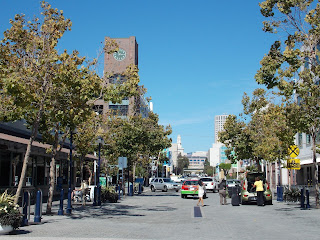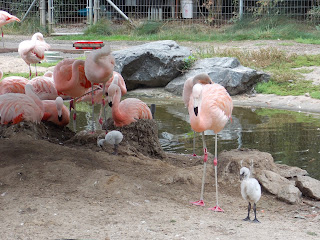We enjoyed walking in the older section of town which has many quaint shops and art galleries. Restored old town has buildings from the mid-19th century. Another reason for the town's success is that in 1851 it became the Placer County seat. The courthouse, built in 1894, is pictured below. It is a rather impressive building and towers over the historic section of Auburn.
Over this past week-end John and I visited his cousin Christine and her husband Bill in Nevada City. With them we attended the Grass Valley Celtic Festival on Saturday. Irish tunes were played fairly continuously on a couple of stages. We especially enjoyed Molley's Revenge and 1916. On Sunday we left our wonderful hosts and drove to Malakoff Diggins. John was interested in the hydraulic method of mining gold. As I mentioned in a previous posting, placer gold ore was difficult to mine and, in the long run, not very profitable. Toward the end of 1860 large-scale hydraulic mining began. That particular type of mining involves blasting at mountains with powerful water cannons- to wash the ore free and uncover the gold-laden ore quartz underneath. One mining company mined $3 million in gold leaves, but their expenditure was $3 million for capital improvements. Unfortunately, farm lands and whole towns were consequently flooded when the resulting tailings began to build up. Lives were lost. Appeals were made to the State Legislature, and, by 1884, restrictions were placed on the mining companies. They could no longer dump the tailings in the surrounding rivers, and it was no longer profittable to continue hydraulic mining. In the park we saw the gouged hillsides which stand next to a massive pit. There are now 3,200 acres of second-growth forests comprising of pines, cedars, oaks and firs growing in the upper slopes. We hiked along the edge of the pit where manzanita bushes are growing profusely. Despite the beauty of the trees and plants growing back, the gouged hillsides still speak to the expensive price for retriving gold by hydraulic mining. It was truly a rape of the land.












































